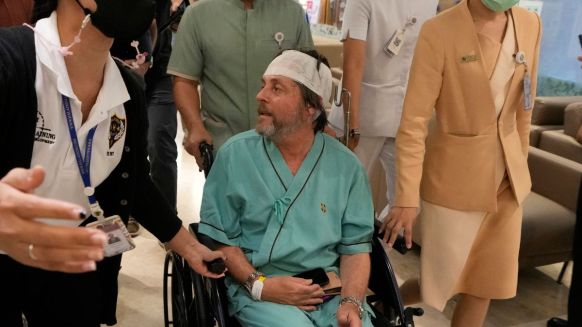Seven jumps on board Singapore Airlines turbulence documentary

Source: X/FL360aero
Just over a month after a Singapore Airlines flight’s turbulence turned deadly, Seven has joined international TV broadcasters in funding a documentary inspired by the infamous event.
Deadline reports Turbulence: How Safe is Your Flight? will use minute-by-minute analysis of flight SQ321 to examine the science of turbulence.
Featuring exclusive interviews with passengers, pilots and air crew, the documentary will examine causes, effects, and implications of turbulence, what pilots could do to avoid it, and whether things are worsening because of climate change.
“Turbulence: How Safe Is Your Flight? has mass global appeal and we expect more broadcasters and platforms to come on board with this topical, eye-opening and informative documentary,” said Bethan Corney, founder of the documentary’s distributor Silverlining.
In addition to Seven, the documentary has also landed investments from ITV (UK), WELT (Germany), TV4 (Sweden), MTV (Finland), TV2 (Denmark), RTL (Netherlands), DPG (Belgium), RTS (Switzerland) and SRL (worldwide).
Discussions with broadcasters in other territories are reportedly ongoing.
What happened to flight SQ321?
On May 21, Singapore Airlines’ flight SQ321 hit severe turbulence about 10 hours into its journey from London to Singapore, forcing an emergency landing in Bangkok.
Flight data and cockpit voice recorders later revealed the plane made a sudden and dramatic 54-metre drop in just 4.6 seconds as an autopilot measure, likely after an updraft forced the plane up by about 110 metres.
As the seatbelt sign had not been turned on before the wind challenges, many passengers who had not been wearing seatbelts were thrown into the air before pilots tried to manually stabilise the aircraft and disengage the autopilot.
British passenger Geoff Kitchen, 73, died of a suspected heart attack, and the turbulence caused dozens of injuries to other passengers and crew.
Among those treated in hospital in the aftermath were patients with spinal cord, brain and skull injuries, Thai medical officials said.

Australians, including Keith Davis (pictured) and his wife Kerry Jordan were injured.
Several of the more than 50 Australians on the flight were among those injured.
They included Adelaide woman Kerry Jordan, who was left with no sensation below her waist due to a spinal injury.
“We just fell into a free-fall zone … and before we knew it, we’re on the ceiling, and then, bang, we’re on the ground,” her husband Keith Davis said.
“[My wife] fell into the aisle, she didn’t move from then on … That was where she remained for the rest of the flight – it was really horrifying.”
Jordan and Davis returned to Australia more than a week after the disastrous flight. She has since been treated at the Royal Adelaide Hospital.








